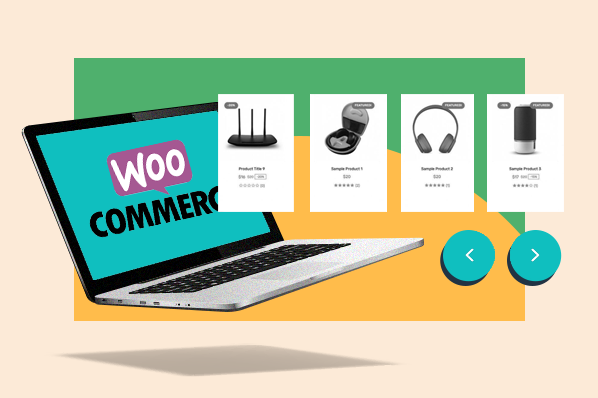Have you ever wondered how can businesses leverage advanced customization techniques in their woocommerce or Shopify development services to create a truly immersive and personalized online shopping experience that keeps customers coming back?
Likewise, Shopify, WooCommerce development service also encompasses a wide range of techniques aimed at creating a highly functional and customized online store.
WooCommerce has emerged as one of the most popular e-commerce platforms due to its versatility, scalability, and extensive customization options.
As businesses strive to create unique and user-friendly online stores, it is essential to explore advanced customization techniques for WooCommerce development services. In this article, we will delve into various techniques that can help you unlock the full potential of WooCommerce and tailor it to meet your specific business needs.
Table of Contents
1. Customizing WooCommerce Themes
Themes play a crucial role in the overall appearance and functionality of your online store. While the WooCommerce development service offers a range of pre-built themes, customizing them allows you to create a unique brand identity. Here are some techniques to reflect on:
a. Child Themes: Utilize child themes to make modifications without altering the core theme files. This ensures that your customizations remain intact even when the parent theme receives updates.
b. CSS Styling: Use CSS to modify the visual elements of your WooCommerce store, such as colors, fonts, layouts, and spacing. By targeting specific classes and IDs, you can achieve a customized look and feel.
c. Template Overrides: WooCommerce provides template files for different store components. Copying these templates into your theme directory allows you to modify their structure and design, providing a personalized touch.
2. Extending Functionality with Plugins
WooCommerce offers a vast library of plugins that extend its functionality and add new features to your store. To take customization to the next level, consider the following techniques:
a. Custom Plugin Development: If you have unique requirements that existing plugins can’t fulfill, consider developing custom plugins tailored to your specific needs. This allows you to add functionality that aligns perfectly with your business goals.
b. Plugin Customization: Many plugins come with customization options, allowing you to modify their behavior, appearance, and settings. Utilize these options to fine-tune plugins according to your requirements.
c. Hooking into WooCommerce Actions and Filters: WooCommerce provides a robust system of actions and filters that allow you to modify its behavior without altering the core files. By leveraging hooks, you can customize various aspects of your store, such as the checkout process, product listings, and order management.
3. Creating Custom Product Types
WooCommerce primarily focuses on physical and digital products. However, there are instances when businesses require custom product types, such as bookings, subscriptions, or memberships. With the following techniques, you can expand WooCommerce’s product offerings:
a. Product Customization Plugins: Numerous plugins are available that enable the creation of custom product types. These plugins provide additional settings and functionalities specific to your desired product type.
b. Custom Development: If the available plugins don’t fulfill your requirements, consider developing custom product types tailored to your business needs. This ensures that your unique products are fully integrated into your store’s ecosystem.
4. Implementing Advanced Checkout Processes
The checkout process plays a vital role in a customer’s journey. Optimizing and customizing the checkout experience can significantly impact conversions. Here are some techniques to reflect on:
a. Simplified Checkout: Streamline the checkout process by removing unnecessary fields and steps, reducing friction, and improving the overall user experience. Consider one-page checkouts or guest checkouts to make the process more convenient.
b. Additional Checkout Fields: Customize the checkout form by adding fields that capture specific information relevant to your business, such as gift-wrapping options or personalized messages.
c. Custom Payment Gateways: Integrate custom payment gateways that align with your specific requirements, providing a seamless and secure checkout experience for your customers.
5. Personalizing the User Experience
Personalization can greatly enhance customer engagement and increase conversions. By tailoring the user experience, you can create a unique and memorable shopping environment. Consider the following techniques:
a. Dynamic Pricing: Implement dynamic pricing strategies to offer personalized discounts, promotions, or pricing tiers based on customer segments, purchase history, or loyalty programs.
b. Product Recommendations: Leverage recommendation engines to showcase products based on customers’ browsing history, purchase patterns, or related items. This encourages upselling and cross-selling.
c. Customized Emails: Customize transactional emails, such as order confirmations and shipping notifications, to align with your brand identity and provide a personalized touch.
6. Implementing Multilingual Support
Expanding your online store’s reach to international markets requires providing multilingual support. With WooCommerce development service, you can cater to a global audience by implementing the following technique:
a. Multilingual Plugins: Utilize multilingual plugins, such as WPML (WordPress Multilingual Plugin) or Polylang, to translate your product descriptions, store pages, checkout process, and other essential content into different languages. These plugins offer intuitive interfaces and easy-to-use translation management systems, allowing you to create a seamless multilingual experience.
By implementing multilingual support, you break down language barriers and provide a localized shopping experience, enhancing customer engagement and boosting sales from diverse regions and language preferences.
Remember, when implementing any advanced customization technique, it is essential to thoroughly test your changes and ensure compatibility with the latest version of WooCommerce and other plugins. Additionally, keep regular backups of your website to safeguard your customizations and data in case of any unexpected issues.
By incorporating these advanced customization techniques into your WooCommerce development services, you can create a highly customized and optimized online store that aligns with your unique business requirements, stands out from competitors, and provides an exceptional user experience for your customers.
Conclusion
Advanced customization techniques for WooCommerce development services enable businesses to build highly tailored and engaging online stores.
Also, for Shopify development services, these techniques play a vital role in enabling businesses to create unique and tailored online stores that stand out from the competition.
However, by leveraging techniques, you can create a unique and successful e-commerce platform that resonates with your target audience. Invest time and effort into exploring these techniques to unlock the full potential of WooCommerce and drive your online business toward success.












